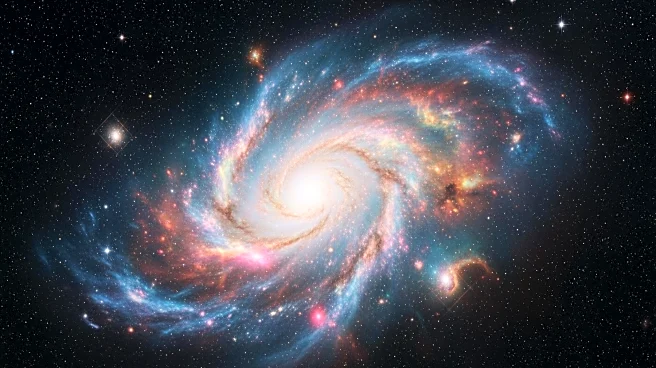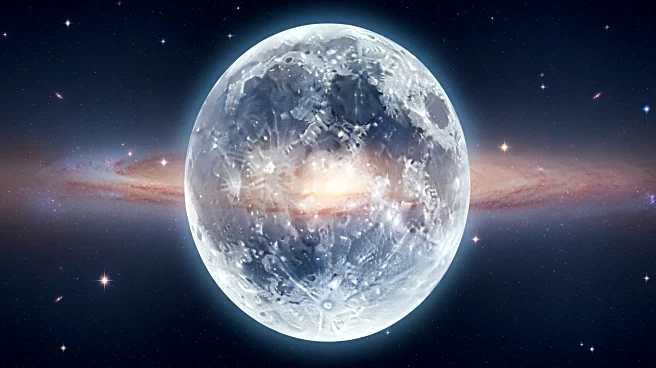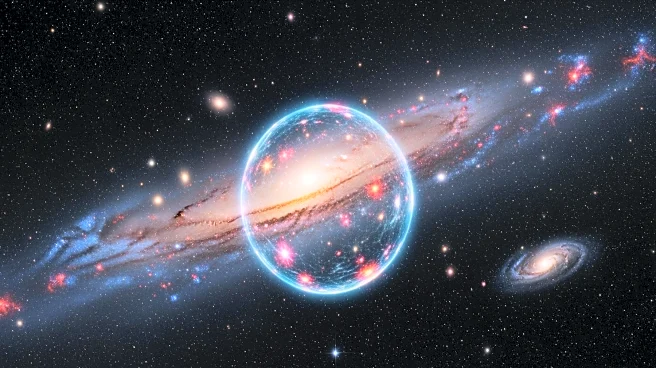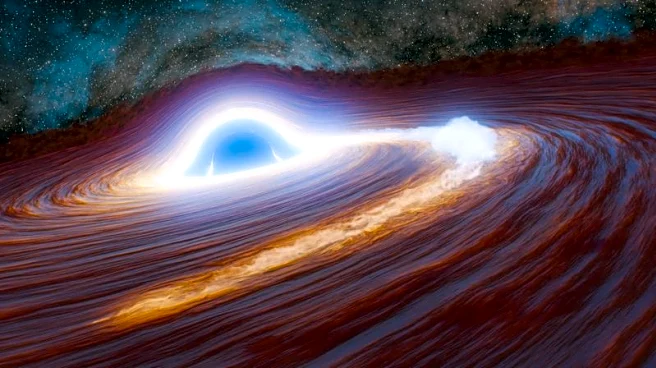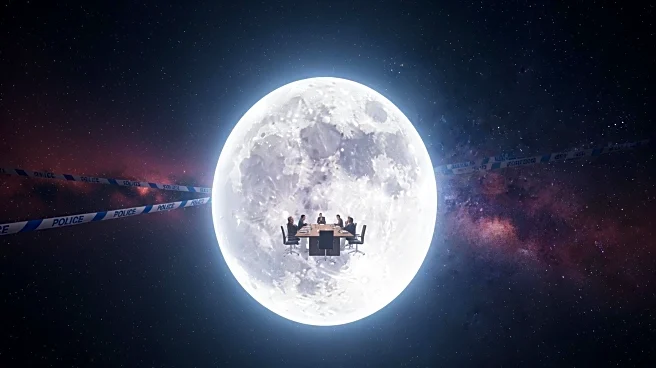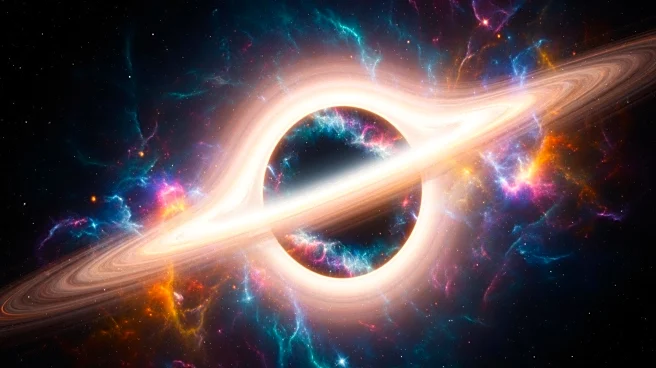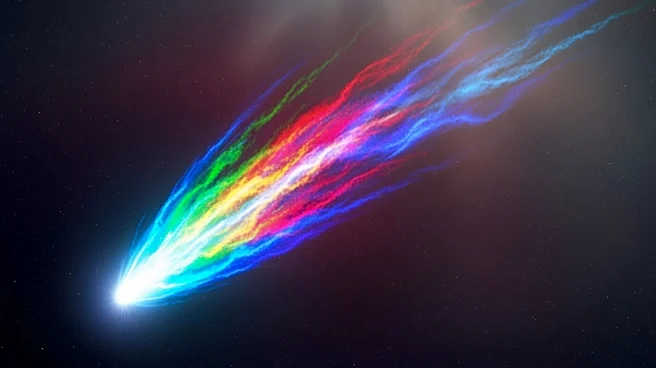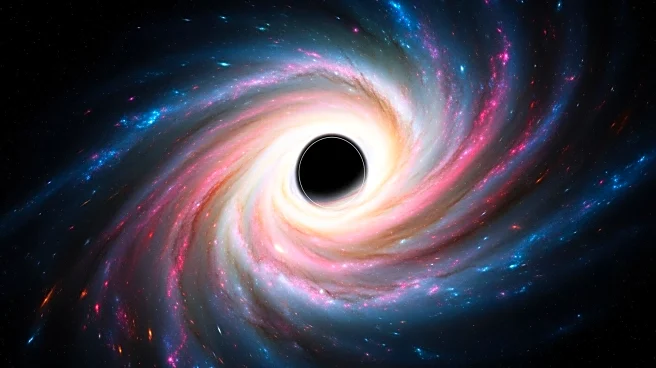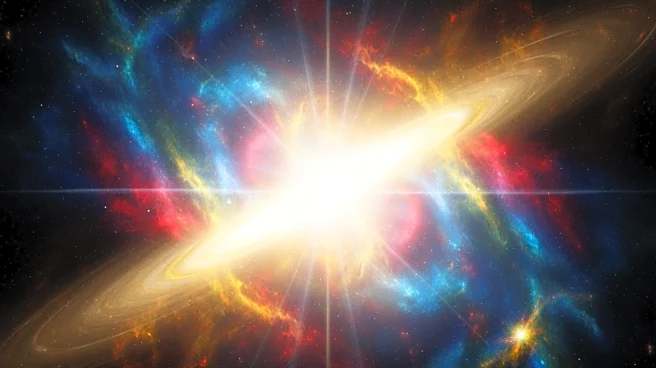What's Happening?
Scientists have discovered a vast molecular hydrogen cloud named 'Eos,' located approximately 300 light-years from Earth. This cloud, one of the largest structures detected near our solar system, was identified
using ultraviolet light emitted by hydrogen. The discovery, published in Nature Astronomy, marks the first time a molecular cloud has been detected through far-ultraviolet emission. Eos, dominated by molecular hydrogen, is mostly 'CO-dark,' meaning it lacks carbon monoxide, which is typically used to identify such clouds. This innovative detection method opens new possibilities for studying the molecular universe and understanding how galaxies transform interstellar gas and dust into stars and planets.
Why It's Important?
The discovery of Eos is significant as it provides a unique opportunity to study the formation of solar systems and the transformation of interstellar gas and dust into stars and planets. The proximity of Eos allows scientists to directly measure the processes involved in molecular cloud formation and dissociation. This could lead to a deeper understanding of the interstellar medium, which is crucial for star formation. The findings highlight the importance of innovative observational techniques in advancing cosmic knowledge, potentially uncovering hidden clouds across the galaxy and expanding our understanding of the universe's molecular composition.
What's Next?
The discovery of Eos may prompt further exploration using the far-ultraviolet fluorescence emission technique, potentially rewriting our understanding of the interstellar medium. Researchers may continue to investigate the properties of Eos and similar clouds, using advanced models and instruments to study their formation and evolution. This could lead to new insights into the origins of stars and planets, as well as the dynamics of molecular clouds within galaxies. The scientific community may also explore the implications of Eos's proximity for future astronomical studies and space missions.
Beyond the Headlines
The detection of Eos challenges conventional methods of identifying molecular clouds, which typically rely on carbon monoxide signatures. This discovery underscores the need for innovative approaches in astronomy, potentially leading to the identification of other 'CO-dark' clouds. The use of far-ultraviolet emission techniques could uncover previously hidden structures, offering a more comprehensive view of the galaxy's molecular landscape. This could have long-term implications for our understanding of cosmic evolution and the processes that govern star and planet formation.


